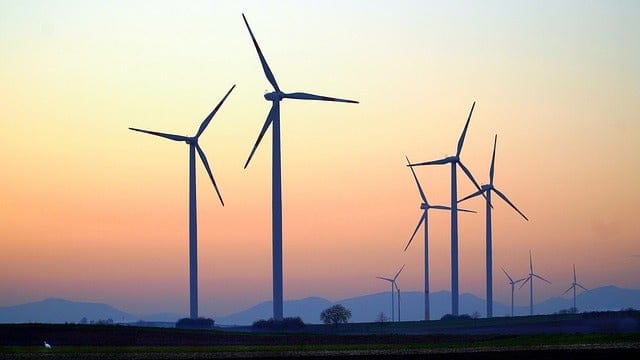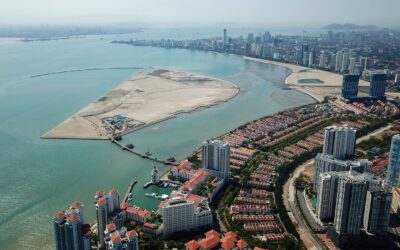India’s journey with wind energy is a story of both ambition and complexity. As one of the world’s largest markets for renewable power, India has made remarkable strides in harnessing its abundant wind resources. Yet, despite impressive growth, the spatial spread of wind energy remains limited, with most installations clustered in a handful of states. Here, we explore the true potential of wind energy in India, why its deployment is geographically uneven, and what the future holds.
India’s Wind Energy Potential: More Than Meets the Eye
India is blessed with a long coastline, open plains, and favorable wind regimes—ingredients that make it naturally suited for wind power generation. According to the Ministry of New and Renewable Energy (MNRE), the estimated onshore wind power potential at 120 meters hub height is about 695 GW, while some assessments at higher hub heights suggest even greater potential. Offshore wind, still largely untapped, could add another 70–174 GW, especially off the coasts of Gujarat and Tamil Nadu
Current Status: A Global Leader, But With Caveats
- Installed Capacity: As of March 2025, India’s cumulative installed wind power capacity stood at about 50 GW, making it the world’s fourth-largest wind power market, behind only China, the US, and Germany.
- Recent Growth: In FY2025 alone, India added 4.15 GW of wind capacity—a 28% jump over the previous year—reflecting renewed momentum in the sector.
- Share in Renewables: Wind energy now accounts for about 23% of India’s total renewable energy capacity, which reached 220 GW in 2025
Where the Wind Blows Strongest
India’s wind installations are highly concentrated. States like Gujarat, Karnataka, and Tamil Nadu dominate, accounting for the bulk of new capacity in recent years. In FY2025, Karnataka led with 620 MW of new installations, followed by Madhya Pradesh and Tamil Nadu. This pattern has held steady for years: nearly 70% of India’s wind power is generated in just a few states.

Why Is Wind Energy’s Spread So Limited?
Despite the vast potential, wind energy’s spatial distribution in India is far from uniform. Several intertwined factors explain this pattern:
1. Nature’s Selectivity: Geography and Wind Patterns
- Resource Concentration: High and consistent wind speeds are found mainly in coastal states and select inland regions with unique topography—such as hilltops, mountain passes, and open plains.
- Limited Inland Potential: Many inland states lack the strong, steady winds needed for viable large-scale wind farms. Most of India’s landmass simply doesn’t meet the technical requirements for wind power generation at scale.
- Offshore Wind Still Nascent: While offshore wind potential is significant, it remains largely unexploited due to higher costs, technological challenges, and the need for new policy frameworks.
2. Infrastructure and Grid Challenges
- Transmission Bottlenecks: The best wind sites are often far from population centers and major industries. Weak or inadequate transmission infrastructure in these remote areas makes it hard to evacuate generated power to where it’s needed most.
- Land Acquisition Issues: Securing land for wind projects is not always straightforward. Regulatory hurdles, fragmented land holdings, and local opposition can slow down project development and add to costs.
3. Policy, Economics, and Market Dynamics
- Policy Uncertainty: While the government has set ambitious targets and provided incentives, frequent policy changes and inconsistent implementation at state and central levels can create uncertainty for investors and developers.
- Tariff Pressures: The shift to competitive reverse auctions has driven wind tariffs down, making wind power more affordable but also squeezing developer margins. This discourages investment in states with only moderate wind potential, as developers chase the lowest-cost, highest-wind sites.
- Competition from Solar: Solar power has grown even faster than wind in recent years, thanks to falling costs and easier site selection. In FY2025, India added nearly 24 GW of solar capacity—almost six times the wind additions. This has shifted focus and investment away from wind in many regions.
4. Regulatory and Social Hurdles
- State-Level Barriers: Land and grid policies, as well as approval processes, vary widely between states, creating additional hurdles for developers.
- Community Concerns: Local resistance can arise due to concerns about land use, environmental impacts, and perceived lack of direct benefits to communities.

Opportunities and the Road Ahead
Despite these challenges, India’s wind sector is poised for further growth. The government’s target of 500 GW of non-fossil capacity by 2030, with annual onshore wind bidding targets of 10 GW, shows strong commitment. The sector is also benefiting from:
- Reduced Tariffs: Lower wind power tariffs are making wind more competitive with conventional sources, attracting both domestic and international investment.
- Policy Support: Waivers on inter-state transmission charges (set to expire in June 2025) have spurred a rush to commission projects, and renewable purchase obligations are pushing utilities to buy more wind power.
- Manufacturing Strength: India has a robust domestic wind turbine manufacturing industry, with an annual capacity of about 18 GW.
Unlocking More Potential
To fully realize its wind energy promise, India will need to:
- Repower Old Sites: Upgrading older wind farms with modern, higher-capacity turbines can boost output from existing sites.
- Embrace Offshore Wind: With new technology and policy clarity, offshore wind could become a major new frontier, especially in Gujarat and Tamil Nadu.
- Expand Grid Infrastructure: Strengthening transmission networks and integrating wind with solar and storage can help overcome grid bottlenecks.
- Streamline Land and Approvals: Simplifying land acquisition and regulatory processes will make it easier to develop projects in new areas.
- Balance Incentives: Revisiting financial incentives and procurement models can help support wind projects in less windy states and diversify the sector’s growth
Harnessing the Wind, Equitably
India’s wind energy story is one of immense promise but also of concentrated progress. The country has made impressive gains and stands as a global wind power leader, but most of this success is confined to a few states with the best natural resources. If India can address the challenges of infrastructure, policy, and market design—and unlock offshore and hybrid opportunities—wind energy can become a truly national resource, powering growth and sustainability across the country.
The wind is blowing in the right direction. With the right mix of innovation, investment, and inclusive policy, India can ensure that the benefits of wind energy reach every corner of the nation.





0 Comments